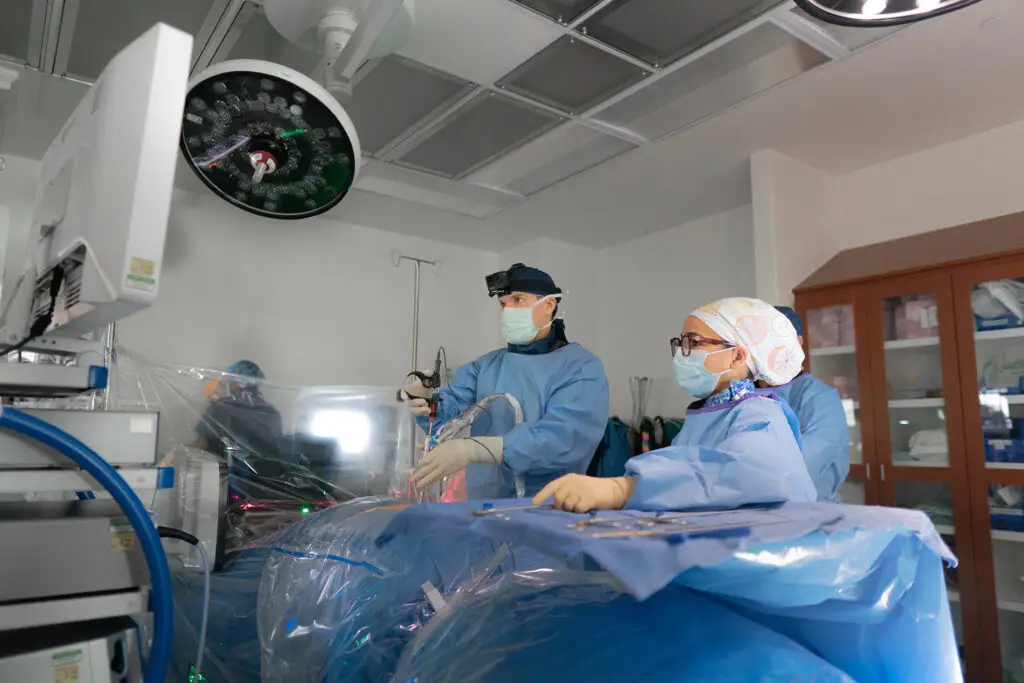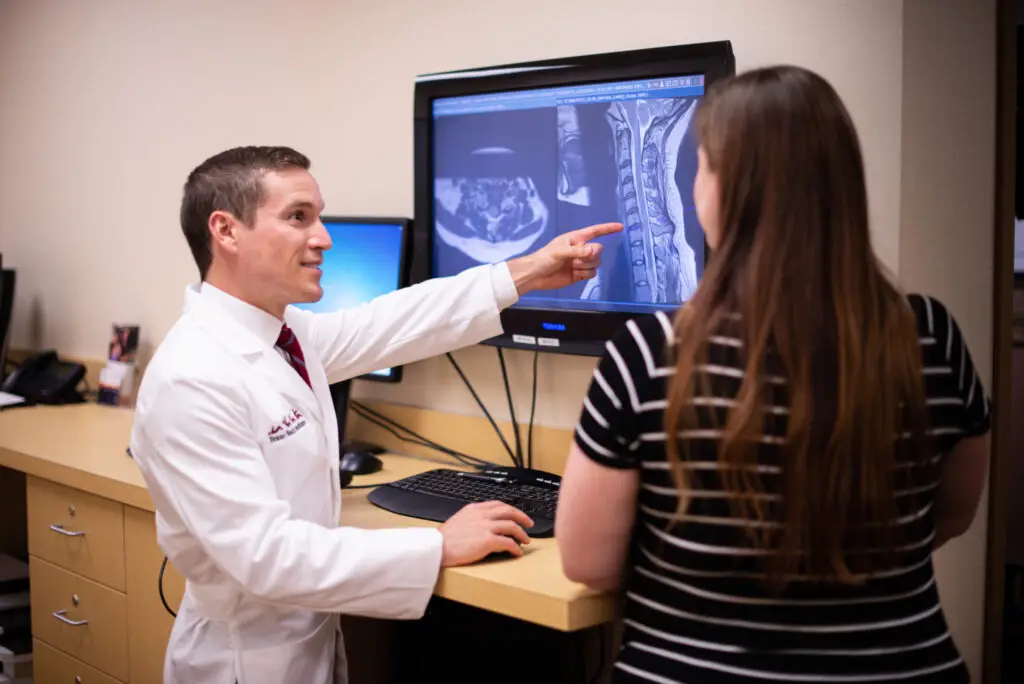For more than 45 years, Texas Back Institute has been advancing the treatment of spinal conditions. The ability to see within the spine and address internal problems without the need for large open incisions has long been an aspiration of spine care specialists. Relatively recent technological advancements have made this dream a reality, giving rise to what is now called “ultra minimally invasive” spine surgery. This technique involves inserting a narrow camera through a tiny opening in the skin, enabling the magnification and projection of images onto a high-definition screen in the operating room.
What This Means for You — In the hands of a skilled surgeon, technology can become a powerful force for healing. Texas Back Institute has become a world leader in endoscopic spine surgery, and hundreds of patients obtain life-changing relief from pain every year.
If you are experiencing shooting pain in your legs or arms, this could be caused by pressure on the nerves in your spine. This pain can often be relieved with a surgical procedure to decompress the nerves. The skilled surgeons at the Texas Back Institute have helped thousands of patients regain a pain-free, better quality of life. Click here to set up an appointment with an expert.
Endoscopic spine surgery is a technique used to address a variety of spinal conditions, including disc herniations and bone spurs. This approach results in much smaller incisions, less muscle damage and scar tissue, and minimal blood loss. Other benefits include shorter hospital stays and recovery times.

According to Dr. Peter Derman, a specialist in endoscopic, Ultra-Minimally Invasive Spine Surgery, “This procedure is performed via a very small, sub-centimeter incision through which a narrow camera is inserted. This minimizes disruption of the muscle and other important stabilizing structures.
“We can view the spine and surgical area on a high-definition monitor throughout the surgery. Patients often experience immediate relief of their sciatica-type symptoms and are comfortably home within hours of surgery.”
Taking Pressure Off Nerves
“Endoscopic surgery is an effective technique for taking pressure off nerves in the spine,” Dr. Derman said. “Pressure on nerves causes pain to radiate down the arms or the legs. The beauty of minimally invasive surgery is that it allows the surgeon to take pressure off nerves without doing damage to other tissues around the site of the problem.
“As has been done with knee or shoulder injuries for many years, we can now use a narrow camera to “scope” the injury and correct it without opening the entire spine. Once we identify the damaged nerve and employ the scope and micro-instruments to correct it, we remove the tube, and the patient has a very small incision that is closed with a small stitch under the skin.”

Good Candidates for Endoscopic Surgery
“This technique is effective for treating any condition that causes pressure on a nerve,” Dr. Derman said. “Whether it’s a bone spur, disc herniation, or even a ligament that has become overgrown and begins to push on the nerve. This process is good for ‘cleaning out’ around nerves and therefore relieving sciatica-type symptoms.
“While I am passionate about endoscopic spine surgery, it’s not ideal for every problem. The surgeons at Texas Back Institute have an array of tools and techniques to treat almost every spine condition. This endoscopic technique is excellent for treating problems that require decompression.”
“The symptoms for this condition are pain, numbness, weakness, or heaviness in the legs or arms. It’s usually not back pain or neck pain alone. Again, the typical patient who can benefit from endoscopic decompression surgery is someone who has pain in their arms or legs.”
Spinal Regions Where Endoscopic Surgery Is Effective
This endoscopic procedure is used to correct nerve compression in all three areas of the spine: cervical, thoracic, and lumbar, according to Dr. Derman. “The most common area where this technique is used is the lumbar (lower back) region,” he said. “This is because there is a great deal of motion in the lower back with pressure pushing down. Patients tend to get disc herniations and bone spurs here.
“The next most likely region of the spine where endoscopic surgery might be called for is the cervical (upper spine, neck area) area to relieve pressure on nerves in this area. To a lesser degree, this minimally invasive approach can also be appropriate for the thoracic (mid-spine) area. This last area is less frequently impacted by nerve compression. However, the traditional surgery for addressing pinched nerves here requires larger incisions, while the endoscopic procedure reduces the damage to tissue when this is necessary.”

Recovery Time Is Minimal
With less tissue disruption during the procedure, patients who undergo endoscopic surgery recover more quickly, Dr. Derman explains.
“One of the wonderful things about endoscopic surgery is that patients bounce back so quickly,” he said. “Part of the reason for this is because the procedure addresses the underlying problem without creating ‘collateral damage’ to surrounding tissue. With traditional surgery, this tissue damage can delay patient recovery.
“My patients who have an endoscopic decompression procedure typically experience immediate and substantial improvement in their sciatica symptoms. They are up walking after surgery and are usually home two hours later without the need for a brace.
“As far as post-operative activities are concerned, I encourage patients to be active. They can walk, elliptical and stationary bike as soon as they feel comfortable – even the day of surgery. We then gradually re-introduce more strenuous and high-impact exercises to get them back to full activity.”
Take a moment to watch as Dr. Derman shares his philosophy on endoscopic spine surgery.
Shooting pain in the legs and arms could be caused by pressure on nerves in your spine. Surgery for nerve decompression is a highly successful treatment for this problem. Ultra minimally invasive, endoscopic surgery is a safe and effective procedure to reduce this pain and speed recovery. Click here to set up an appointment to speak with Dr. Derman or any of the other world-class surgeons at Texas Back Institute.


